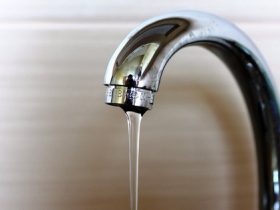Everybody maintains his or her own assumption about 10 Reasons for Low Water Pressure in Your House.

Low tide stress in your house can be an aggravating trouble, impacting everything from showering to washing dishes. If you're experiencing weak water circulation, there are a number of possible reasons and options to discover. In this overview, we'll discuss common reasons for low tide pressure and functional steps to resolve the concern efficiently.
Introduction to Low Tide Pressure
Low tide pressure happens when the flow of water from your faucets, showers, and various other components is weaker than typical. This can make daily jobs extra tough and less efficient. Understanding the sources of low water stress is critical to discovering the right remedy.
Common Root Causes Of Low Water Stress
Faulty Stress Regulatory Authorities
Stress regulatory authorities are in charge of maintaining regular water pressure in your home. If they malfunction, it can result in low tide stress or uneven flow throughout your house.
Metropolitan Water System Issues
Often, the problem exists outside your home. Community supply of water issues, such as main line leakages or upkeep job, can momentarily minimize water stress in your location.
Pipeline Obstructions
Over time, pipes can end up being obstructed with natural resource, sediment, or debris, limiting the flow of water. This is a typical concern in older homes with galvanized steel pipelines.
Rust
Deterioration within pipes can bring about leaks and reduced water pressure. Rust build-up can constrict water circulation, especially in aging plumbing systems.
Just How to Diagnose Low Water Stress
Examining Pipes
Check visible pipes for indicators of leakages, corrosion, or clogs. Pay attention to any kind of uncommon sounds, such as knocking or rattling pipelines, which can suggest issues within the plumbing system.
Consulting with a Plumber
If you're not able to pinpoint the source of low water pressure, consider working with an expert plumber to conduct an extensive evaluation. They can identify underlying concerns and suggest suitable options.
Inspecting Taps and Fixtures
Beginning by checking the water pressure at various faucets and fixtures throughout your home. If the issue is isolated to specific locations, it may suggest localized problems.
DIY Solutions to Repair Low Water Stress
Flushing Hot Water Heater
Debris buildup in the water heater can restrict circulation and lower performance. Flushing the container periodically helps get rid of sediment and preserve optimal efficiency.
Examining Stress Regulator
Make certain that the pressure regulator is functioning correctly. Changing or replacing the regulator can aid bring back proper water stress throughout your home.
Cleaning Up Aerators and Showerheads
Mineral deposits can accumulate in aerators and showerheads, minimizing water flow. Eliminate and cleanse these parts routinely to boost water stress.
Cleaning Clogs in Pipes
For minor blockages, try using a plumbing serpent or chemical drainpipe cleaner to clear obstructions in pipes. Beware when using chemicals and follow safety and security guidelines.
When to Call a Specialist Plumber
If do it yourself initiatives stop working to settle the problem or if you believe significant plumbing issues, it's best to seek support from a licensed plumber. They have the competence and tools to resolve complex concerns safely and successfully.
Preventive Measures to Maintain Water Pressure
Setting Up a Pressure Booster
Think about installing a pressure booster pump to improve water stress in locations with consistently low flow. This can be specifically useful for multi-story homes or homes with high-demand components.
Monitoring Water Use
Be mindful of water use behaviors and prevent ill-using the plumbing system. Basic adjustments, such as staggering showers and laundry loads, can help keep adequate water pressure.
Routine Upkeep
Arrange routine maintenance for your plumbing system to avoid concerns such as deterioration, leaks, and clogs. Resolving small issues early can help prevent even more substantial repair services later.
Verdict
Taking care of low water stress can be frustrating, but identifying the underlying causes and applying appropriate services can recover optimum circulation throughout your home. Whether it's cleaning up aerators, evaluating pipelines, or consulting with a plumber, taking positive actions can ensure a constant supply of water for your daily requirements.
How to Fix Low Water Pressure
Have you noticed the water pressure in your shower or taps seem a little weak? If so, the water pressure in your home may be lower than it should be.
Low water pressure can affect many areas of your home. You might notice it taking longer to fill the bathtub or washing machine or that you’re not getting the pressure you need from your garden hose.
These pressure changes can be sudden or may happen over time. It may take a little investigating to find the cause, but there’s usually an easy solution.
Testing Water Pressure in Your Home
One easy way to check water pressure at home is with a water pressure gauge. You can find one online or at a hardware or home improvement store.
Before you check the pressure, make sure the taps and appliances that use water are turned off. Then, connect the gauge to the exterior hose bib or tap.
Turn the tap up all the way and read the gauge to see the water pressure. If you don’t have an exterior tap, you can disconnect the hose of your washing machine and connect the water pressure gauge to it.
Make sure all your water-using appliances are turned off. Turn the faucet on high to read your home’s pressure or PSI.
If the idea of checking water pressure or dealing with plumbing issues on your own seems a bit daunting, you can call a professional plumbing service to handle the job.
They can help you find the root of your water pressure issues and determine the best solution to the problem.
Clear the Clogs
A clogged pipe is one of the most common issues that leads to low or no water pressure. Pipes can become clogged due to a buildup of mineral deposits.
This is especially true if you have hard water where you live. Even a small clog can reduce the pressure of water running through the pipes.
Clogs usually build up over time. People notice when it affects their showers or the appliances that use water every day.
There are products and tools for clearing clogs on your own or you can call a plumber. They have the expertise and the right tools to locate clogs and determine whether it’s better to repair or replace the pipe.
Clean or Replace Corroded Pipes
Do you live in an older home where the plumbing is decades old? If so, your pipes are probably prone to corrosion. This is especially true if the pipes are galvanised steel.
This material is likely to corrode after 20 years of use. Brass pipes average 40 to 70 years before corroding, while copper pipes are good for 50 years or more.
If you installed extra plumbing fixtures after building or moving into your home, there’s a good chance you could have corroded pipes. The more plumbing fixtures in the home, the harder your pipes have to work, and the more likely they will corrode.
It’s important to address pipe corrosion. Failing to fix the problem can lead to cracked pipes, major leaks, and water damage in your home.
Swapping out old plumbing pipes reduces the risk of corrosives. Updated plumbing produces cleaner and better-tasting water, too.
Seal the Leaks
Another cause of low water pressure could be a leak in the pipes or in the water line. Small cracks or holes leak water into unintended areas before the water can reach the various taps in your home.
If your basement or foundation has flooded, it’s a strong sign of leaking pipes. You can look for leaks by turning off the taps for a couple of hours. Then, check the water metre reading.
An increase may indicate a leak. To see or access the plumbing, check for wet spots or pooling water. If you find a leaking pipe, there could be more.
You may not be able to reach these spots on your own, so it’s a good idea to enlist the help of a professional plumber at this point. They can check all your pipes for leaks and repair or replace damaged ones to restore adequate water pressure.
It’s important to address water leaks right away. Standing water can lead to mould or mildew growing in your home.
Replace the Pressure Regulator
Do you have a pressure regulator in your house? It’s a valve that helps keep the water pressure entering your home at safe levels. A functioning regulator keeps the pressure constant and flowing at around 50 PSI.
High water pressure may damage your plumbing and lead to excess stress on your appliances that use water. When a pressure regulator fails, it can lead to an increase or decrease in pressure.
Sediment or debris in the value can cause a blockage. You can check the pressure regulator by attaching the pressure gauge to an outdoor spigot. If the pressure reads lower than the valve reported, the regulator may be faulty.
A plumbing expert can assess whether the pressure regulator is working for your home. It’s important to replace a failed regulator.
Instal a Booster Pump
Sometimes you may look everywhere to discover the cause of low water pressure but not find an answer. Talk to your neighbours to see if they’re having similar issues.
If other homeowners near you are experiencing water pressure problems, installing a booster pump may be a good solution. It can increase water pressure to the main supply line that runs to your home’s system.
An experienced pro in UK plumbing issues can help you install a booster and restore the water pressure to your house.
How to Fix Low Water Pressure
If you notice the water pressure in your home is less than what it should be, there are a variety of possible problems and solutions. If you’re not a plumbing expert or don’t have the time to spare for DIY plumbing issues, call the pros instead.
At PM247, we know how to improve low water pressure in your home. Simply tell us the plumbing issue you’re having and we will take it from there.
For over 20 years, we’ve provided professional plumbing, drainage, roofing, heating, and electrical services to our customers. We would love to help you, too!
https://www.pm247.co.uk/blog/how-improve-low-water-pressure/

We hope you enjoyed reading our piece on 10 Reasons for Low Water Pressure in Your House. Thank you so much for taking time to read our article. Are you aware of anybody else who is involved in 9 Reasons for Low Water Pressure in Your House? Please feel free to promote it. Bless you for your time. Return soon.
Click Here